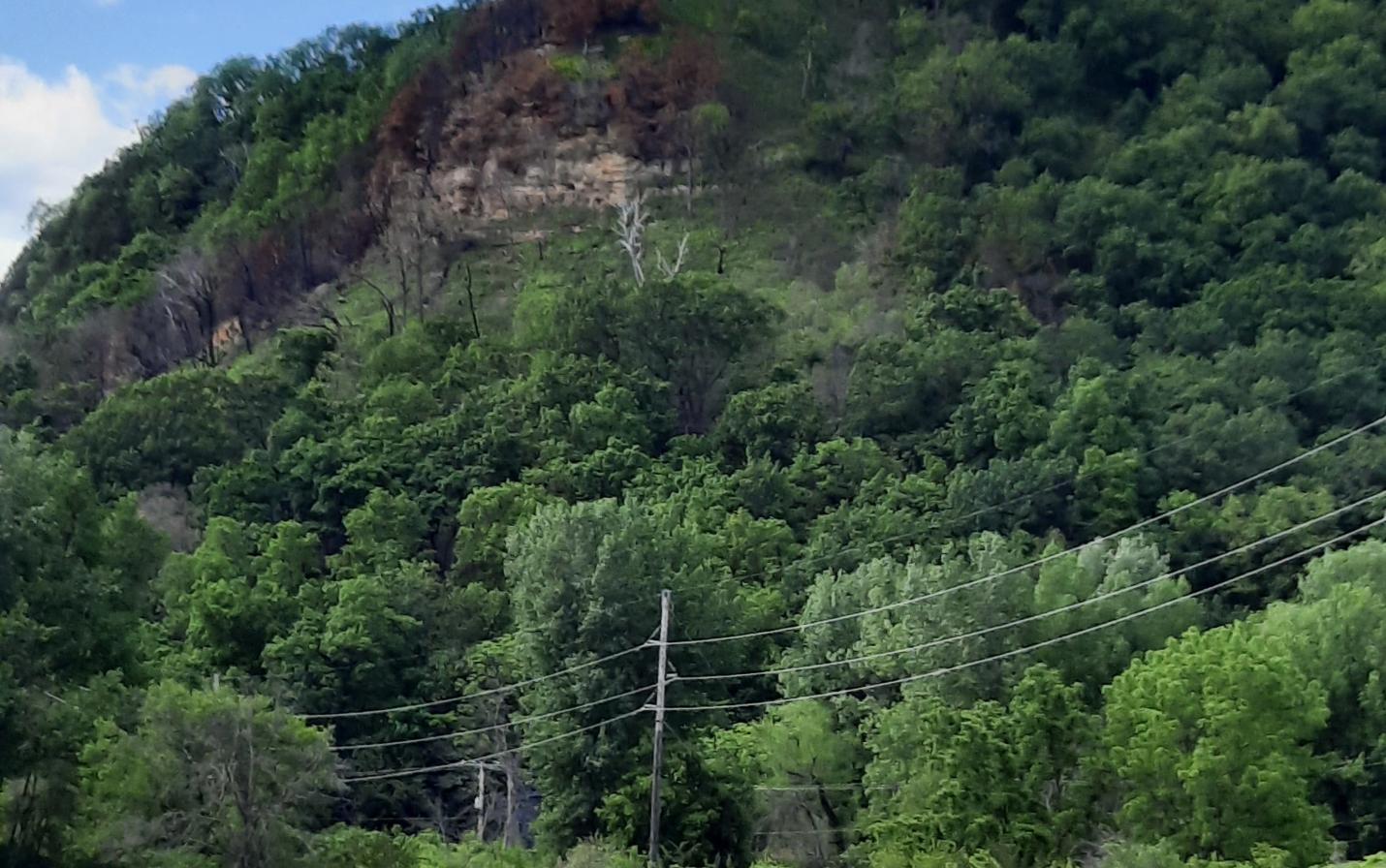
Anybody who has worked to restore a prairie, rid a piece of land of invasive buckthorn, or revitalize a woodland knows that some conservation work is almost entirely done by hand, one task at a time, with simple tools, sturdy gloves, and a strong back. Add to that a seemingly impossible slope, and you have your work cut out for you. Carelessly put the chainsaw down, and you might have to chase it several hundred feet down the hill.
“Angel Bluff is one of our more rugged, steep properties. I was younger when we started,” said Levi Plath, Conservancy land manager. “Folks are shocked at how steep the property is.” So it is—and will continue to be—on Angel Bluff in Buffalo County. This 20-acre nature preserve, owned and managed by the Conservancy, fronts the Mississippi River just south of Fountain City, Wisconsin, and offers extraordinary views of the river and Winona, Minnesota, for those hardy enough to scramble to the top.
Stanley A. Ledebuhr, a retired public school teacher and lifelong Winona resident, donated the property to Mississippi Valley Conservancy 17 years ago with the promise from the Conservancy that it would be protected and open for public use. He had owned the property for 30 years and called it “Angel’s Monument” in honor of his late wife, Marian. Since Angel Bluff’s acquisition in 2008, Conservancy staff and volunteers have tackled the slopes and are restoring steep goat prairie, oak openings, and native woodland.

(Photo: A large group of volunteers helps remove invasive plants at Angel Bluff in 2015.)
“Back in 2008 there was just a little prairie on top,” according to Pat Caffrey, volunteer and Conservancy board member. “A lot of the property was mixed woodland with an understory of buckthorn.”
Restoration efforts include cutting stands of invasive native red cedar trees on the steep slopes, selectively felling trees in the woodlands to provide better opportunity for desirable native trees, and cutting and chemically treating large areas of invasive buckthorn and honeysuckle. “Angel Bluff is only 20 acres,” said Plath. “But we’ve put in so much work because of what’s there: prairie, oak opening, and oak woods…all habitats that are becoming more rare.” Conservation workers also know that progress is often determined by the number of hands on deck. Along with Conservancy staff, volunteers at Angel Bluff have included the Boy Scouts, Challenge Academy, and Winona State University students and faculty.
Funding for habitat restoration work has been supported by the C.D. Besadny Conservation Fund administered by the Natural Resources Foundation of Wisconsin, a State Wildlife Grant, the Partners for Fish & Wildlife Program, Buffalo County, and the members and supporters of the Conservancy. In addition to the work with shovels and saws, controlled burns have written an important chapter in the evolving success of habitat restoration on Angel Bluff. The Conservancy has been implementing prescribed burns for over a decade there, and staff members have seen an increase in native prairie wildflowers and species diversity. “Past burns did miracles. They really opened up the west side of the property,” according to Caffrey.

(Above: Prescriptive fires at Angel Bluff have opened up more dry bluff prairie, and allowed more room for native plants to grow.)
After years of hard work, the changes are becoming more evident each year. Native prairie plants that have been biding their time for decades slowly emerge in the new sunlight once dense stands of cedar are cut and the area is burned. Overall, the prairie is returning to the steep slopes, the woodlands are returning to a more natural habitat, and the buckthorn is diminished. “There is still buckthorn,” said Caffrey, “but it’s better.” And in the end, that is the goal with every Conservancy project…that it is left better than we found it for the wildlife and people who live in the area. Angel Bluff is open to the public for hiking, hunting, snowshoeing, and wildlife observation. Bring good boots; it is a steep scramble to the top with no trail, but the view is fantastic.
Habitat restoration work is ongoing and opportunities provide volunteers with fun opportunities to learn about habitat restoration, species identification and conservation topics. To learn more about volunteer opportunities or to sign up for the Conservancy volunteer email list, visit MississippiValleyConservancy.org/volunteer.